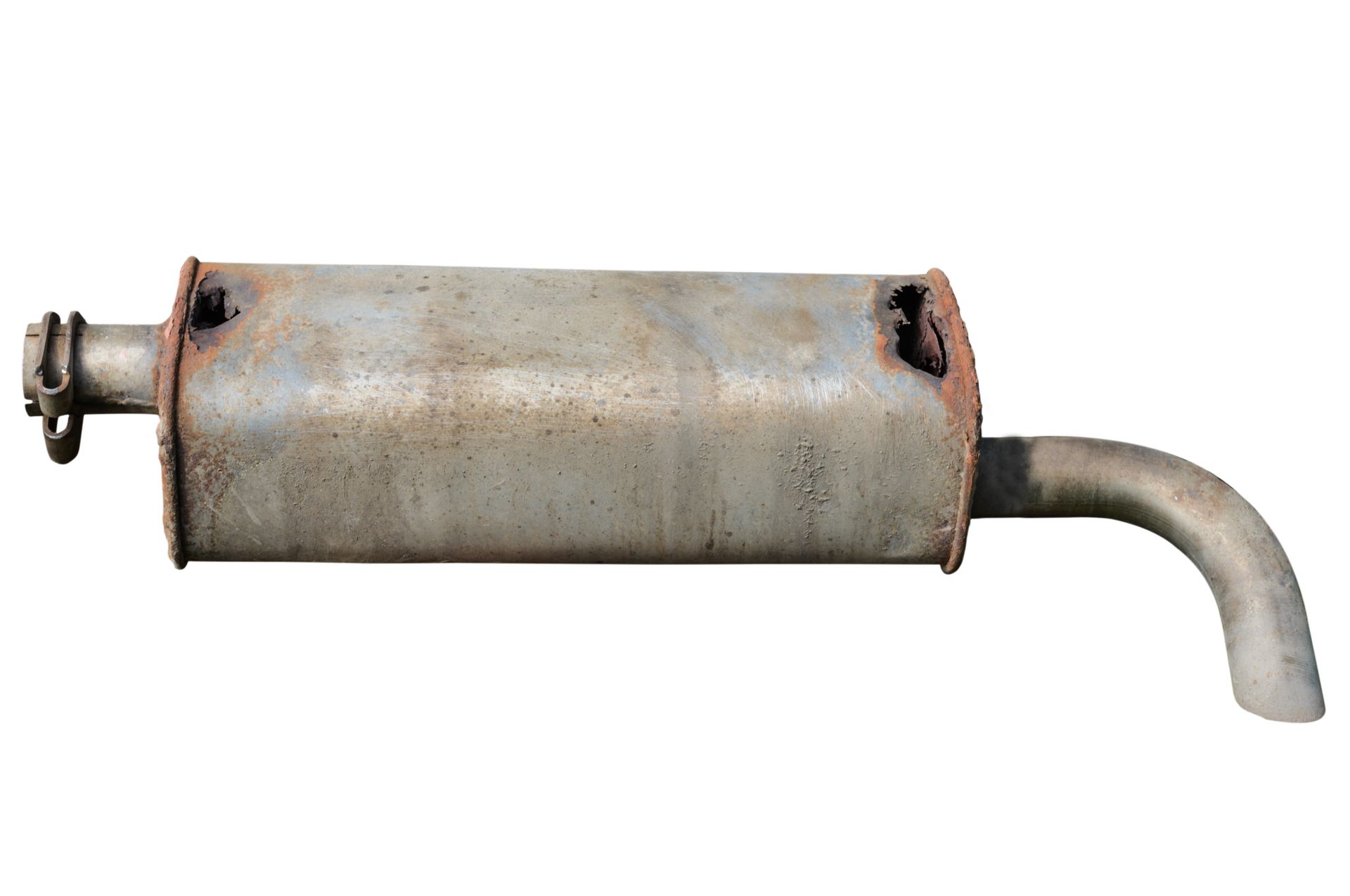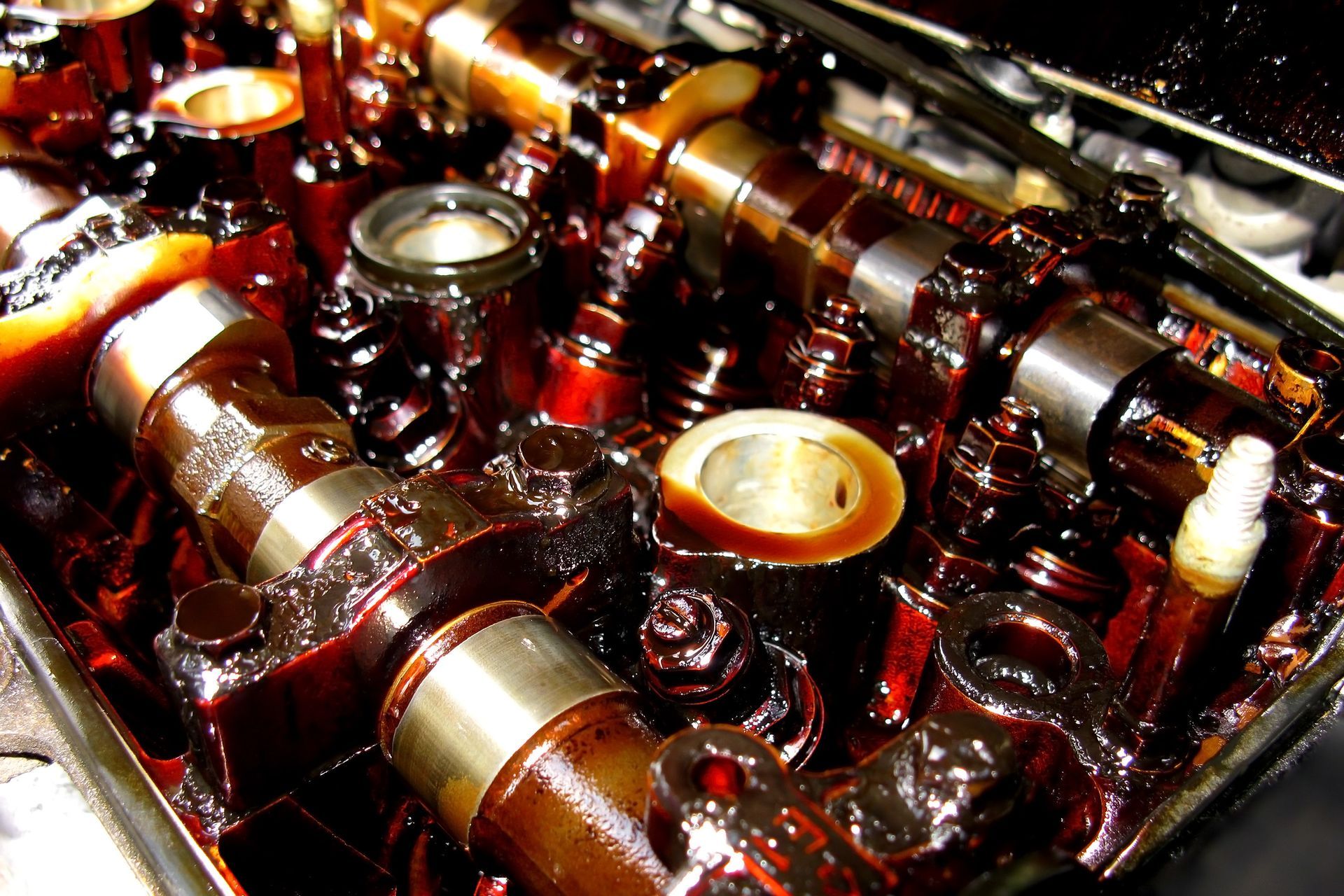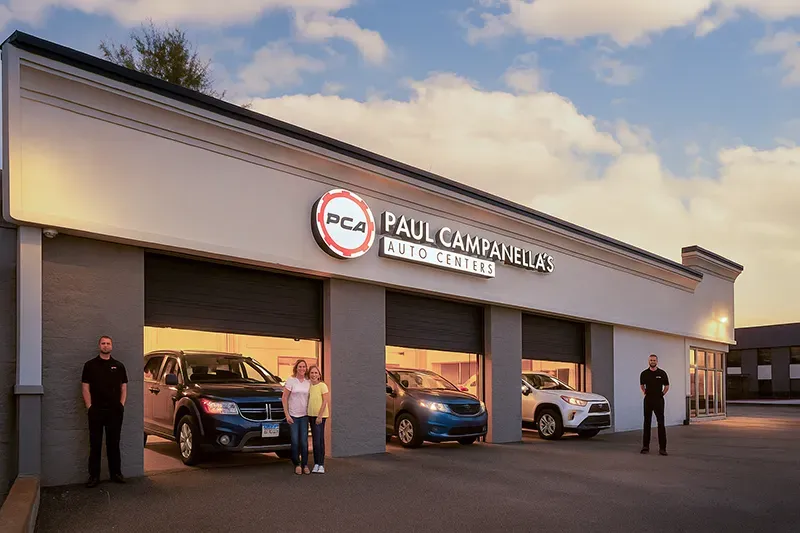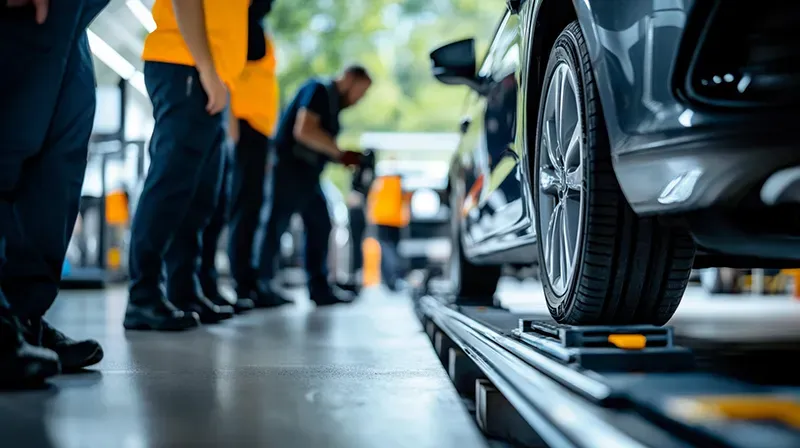Before Traveling Again As COVID-19 Starts To Dwindle, Be Sure to Check These Car Maintenance Tips
Most Americans have been more or less stuck in place for the last year. However, as the COVID-19 vaccines gradually roll out and parts of the country begin to reopen, many are thinking about the possibility of summer road trips.
But in order to go on a long road trip, a reliably working car is necessary. And since many have deferred car maintenance over the last year – perhaps because they haven’t been commuting during the pandemic, or because lost income makes it unaffordable – it is even more important to make sure the car is in working order before hitting the road. Car maintenance is always vital, but now more than ever car owners need to get everything up to par. Getting stranded in the middle of nowhere during a road trip is not a fun experience, so follow these tips on pre-trip car maintenance.
Post-Pandemic General Car Maintenance
A modern car is full of a multitude of components that have to be maintained to stay functional. Make sure to check these parts before embarking on any long road trip.
Brake Pads
A car’s brake pads give it the friction it needs to slow down and come to a stop. Over time, they gradually deteriorate with use, and eventually become too thin to work well. This is a major safety issue; if the car can’t stop effectively then it becomes much more difficult to avoid obstacles on the road.
It’s fairly easy to diagnose worn-down brake pads , since they produce an extremely obnoxious squealing or screeching noise when the pad material degrades. Not only does replacing the brake pads stop the irritating noise, it also (and much more importantly) makes the road trip less dangerous. Depending on brake pad quality, what materials they are made out of, and how much they get used, they typically last somewhere between 25,000 and 70,000 miles. If the brake pads are worn, it is easiest to take the car to a mechanic to have them replaced.
Vehicle Lights
Nothing kills the vibe of a vacation like getting pulled over by police in an unfamiliar location. Burnt out headlights, taillights, or blinkers are some of the most common causes for police traffic stops. Furthermore, without proper illumination of the road from headlights and signaling to other drivers from blinkers, driving is significantly less safe. In order to make sure that all lights are in working order, turn the car on, put it in park, and turn on the headlights (they might be automatic). Circle around the car and see if any bulbs are seriously dimmed or burnt out. Repeat the process by turning on left and right turning signals. Keeping the car in park, hold the brake pedal down with a brick (or have someone else hold it down) and check the brake lights.
Car Air Filters
Think it’s a good idea to take the shortcut with the dirt roads? Think again – unless the car’s air filters are in top condition. America’s roads are dirty places. Cars have air filters to stop debris, dust, dirt and insects from entering the engine and the interior workings of the car. However, with time, these air filters become clogged, hampering engine performance, fuel economy , and most noticeably, interior air quality. The engine air filter should get replaced annually, or approximately ever 10,000 to 15,000 miles. The cabin filter typically lasts closer to 12,000 to 15,000 miles.
Replacing air filters is almost always inexpensive and simple, so there is really no reason not to. Air filter replacement is as easy as opening the hood of the car, finding the air filter housing, open it (it is most likely secured with clamps that can be released by hand or with a screwdriver), removing the old air filter, and installing a new one and closing the air filter housing.
Vehicle Belts and Hoses
Checking under the hood for easy to spot problems is always a good idea before a long road trip. One of the easiest problems to spot are those affecting belts and hoses. Put pressure on the belts to ensure they are snug and tight. If there isn’t any slack, that’s a good sign. If there are teeth on the belt, none of them should be loosened by putting pressure on the belt. If the belt skips teeth, do not drive the car. Timing belts can also snap , causing even more problems.
It’s also a good idea to look for any damaged teeth on the belt. Look for visible cracks or frays on the teeth, and make sure none of them are missing. Have a look at the hoses to make sure there are no fluid leaks. Leaks are most common toward the end of a hose. Belt and hose failures in the middle of a road trip can be catastrophic, causing car failures and leaving drivers stranded with a potentially unfixable vehicle.
Car Battery
Cars need batteries to function. Next to the engine and tires, they are potentially the next most important part of the car to keep in good condition. Not only do they start the engine, they also power all the electronics in the car such as lights, radio, charging stations, and in some cars even the meters behind the steering wheel. Unfortunately, even in ideal operating conditions, car batteries weaken and degrade with time. Eventually, they become incapable of providing the power necessary to start the engine. Usually, this takes somewhere from three to seven years.
Different factors affect battery lifespan, including their type and size. However, there are some bigger factors, such as:
- Weather - One of the biggest causes of battery failure is extreme temperatures. Hot temperatures can cause the water in the battery to vaporize, corroding the battery’s internal components. Cold temperatures make it harder for the battery to start and run the vehicle. During winter months, car batteries are under approximately twice as much stress as mild weather.
- Repeated Short Drives - Batteries are charged by driving the car. As a consequence, regularly driving a car for less than 10 to 30 minutes will drain the car’s battery and potentially put strain on it long-term, since that isn’t long enough to fully recharge the battery. Exactly how long is necessary to recharge the battery fully depends on the car, the battery, and other factors – but a lengthy series of very short trips can spell disaster for car batteries. Repeatedly starting and shutting off the engine has the same effect.
- Faulty Alternators - Alternators are the charging systems that charge car batteries. If the alternator has problems, batteries will drain faster than usual or not charge fast enough. If the alternator’s diodes are in bad condition, they can directly drain power away from the battery and cause it more serious long-term damage.
- Overuse of Electronics - Car batteries already work hard to power the vital functions of a car. Using the radio, in-vehicle entertainment or navigation systems, charging ports, and other non-vital functions will put more stress on the battery, shortening its lifespan.
If a battery deals with any of the above issues, it is probably time for a replacement. However, that’s not the only way to tell. Some other signs that it’s time to replace the battery include taking longer to start the car, a long click or crank noise under the hood when the ignition key is turned, electronics malfunctioning, corroded terminals on the battery (identifiable by the presence of white, ashy material), having to jump the car frequently, or the “check engine” light coming on. Check all of these variables before going on a long trip anywhere. When replacing a battery, make sure to get the right kind and buy one of equal or higher quality. If it is being installed by a professional, have them check to make sure the battery is
Post-Covid-19 Vehicle Clean Up
Nobody wants to take a road trip – especially a long one – in a car that is unpleasant to be in. Therefore it is crucial to clean the inside and outside of the car diligently before long trips. This will make the trip a lot better, and also reduces the risk of losing items during a vacation.
Cleaning the Vehicle Interior
Pay especially careful attention to any part of the interior that gets more use than the rest, such as floor mats, seats, storage areas and dashboard controls. And make sure to get the cupholder too – many have placed drinks in the cupholder and then spilled them while taking them out because the cup was stuck to the bottom of the cupholder. The trunk should be cleaned up too. While it doesn’t have to be perfect, it does need to be clean enough that it won’t soil or damage luggage or souvenirs picked up during the trip.
And don’t forget: cleaning the car interior isn’t just about making the drive pleasant. A dirty car means a more irritable and distracted driver, and the more irritable and distracted a driver is, the less safe they are on the road. Don’t let a dirty car be the reason for an accident or episode of road rage.
Cleaning the Vehicle Exterior
Insects, bird poop, gravel – what do these three things have in common? They all damage paint on cars, and they all commonly collide with car exteriors during travel. In addition to these three paint-eaters, dirt and dust from the road can coat car windows and make paint more vulnerable.
The longer these things are stuck to a car’s paint, the more damage they cause. As such, simply washing the car regularly will make the paint job last a lot longer and save money long-term. Even if maintaining the paint is a low priority, there are serious safety reasons to at least keep the windshields clean. Visual obstructions make driving far more dangerous.
Vehicle Organization
One of the easiest ways to ruin a road trip is to get buried in a haphazard mess. Being unable to find things you need can be infuriating, and people often lose important items (like wallets) permanently during road trips. The best way to avoid these problems is by organizing the car interior prior to leaving. After cleaning the interior, make sure that all commonly used storage areas (e.g. cupholders, side pockets, glove compartment, etc.) are all in good shape and well organized.
Before leaving, double check to ensure all the necessary power adapters and cords are packed. Also make sure they are the correct cords and/or power adapters for the electronics coming along on the trip. Our devices are a vital part of modern life, and last thing anyone wants on a road trip is to lose our invaluable gadgets (or their chargers) in the “Canyon of Despair” between the front seats and the center console. Finally, be sure to designate a bag or box for trash. It helps maintain tidiness and makes road trip companions more comfortable.
Car Fluids: The Lifeblood of Automobiles
Much like a living organism, cars today have a number of fluids that circulate throughout the vehicle to help it function properly. Most cars have six “essential” fluids, which need to be replaced periodically based on mileage. To decide what needs attention, consider how far the car has gone since its last service, and how far the road trip will take it. It’s not a good idea to hit the mileage number for service during the trip, and it is much better to handle the fluid maintenance beforehand.
Radiator Fluid
Car engines are hot. The radiator keeps them cool. Radiator fluid , also known as antifreeze or coolant, serves the function of extracting the heat from the engine and dissipating (or radiating) it through the radiator. However, over time, radiators can gradually lose fluid due to leaks or other problems. A low radiator fluid level results in overheating, and an overheated engine will not work, meaning the road trip ends. Check coolant levels and top them off if necessary. It is also necessary to flush the system at least every 40,000 to 50,000 miles.
To check radiator fluid levels, park the car on a flat (level) surface. If the car is not level, and is tipping one way at an angle, it is impossible to get an accurate reading of the coolant level. This may sound silly, but accurate readings are important and even slight tipping can throw things off. Furthermore, if radiator caps are opened on a steep enough hill, coolant can pour out.
Before doing anything else, make sure the engine is cool. Hot radiator caps have caused countless burns and injuries over the years. The radiator is under tremendous pressure and dissipates a lot of heat, so it can cause very serious damage to human tissue. In a pinch, if the check cannot wait, it is possible to cover the radiator cap with a thick cloth to protect the hand from the heat and steam that comes off it.
Once the engine is cool, open the radiator cap. The radiator is almost always located at the front of the engine. To remove its cap, press down and twist at the same time. This requires a lot of pressure and twisting strength, and it can take two hands to put enough force on it to get it off (this task is so difficult because there is a near-vacuum in the radiator). To keep radiator fluid off hands, cover the cap with a rag or wear gloves. Make sure the coolant reaches the top of the radiator. Once the cap is off, the coolant should be immediately and obviously visible. If it isn’t, or if the car has a “full” marker indicating what the optimal level is, then additional radiator fluid is necessary. Some cars have a transparent coolant overflow tank that has markings letting drivers know when to add more coolant.
Coolant can become defective or contaminated over time. Check for any kind of oily film on the surface of the coolant – this may indicate an oil leak. This is a serious problem and requires an immediate trip to the mechanic. Sometimes coolant loses effectiveness with time. Most auto-parts stores and online retailers carry coolant test strips that can be dipped in the radiator fluid to check its effectiveness.
Engine Oil
It doesn’t take a mechanic to know that oil is one of the most important fluids for a car engine. Oil lubricates moving parts like the crankshaft, camshaft, and pistons, so that they move with minimal friction. Oil degrades with use and becomes less effective with time, so it has to be changed periodically. The recommended interval for oil changes was, once upon a time, every 3000 to 5000 miles. However, thanks to the miracle of modern technology reinventing both oil and engines, that number is closer to every 7500 to 10,000 miles. Just to be sure (especially if you have an older car or haven’t used it much in a while), double check the car’s manual before scheduling oil changes.
On the other hand, if the car’s oil has been replaced within the recommended mileage number, it is only necessary to check the oil level. Like measuring coolant, when checking the oil it is vital to be on a flat, level surface. Use the dipstick – a long, thin rod, usually with a looped handle, typically located on one side of the engine. In most cases, it is easy to spot because the handle is marked with bright colors. Some (automatic transmission) cars also have a dipstick for checking the transmission fluid, so be sure to use the right one. If the car was just running, give the oil a few minutes to stop moving around. Wipe off the dipstick clean with a rag, insert it into the engine, and make sure it goes all the way in. Remove it, but do not put it upside down to look at it, since that will make the oil run upward and mess up the reading. The dipstick usually has two marks indicating the minimum and maximum oil level. If it’s below the bottom mark, it is time to add a quart of oil. Ensure that the oil added is the right type and weight for the car. If the oil is totally black or gritty, it might be time for an oil change. Otherwise, if the oil level is between the two marks and in good shape, everything is ready to roll.
Transmission Fluid
Road trips are less safe and far less enjoyable with a jerky transmission. When the car is shifting gears, transmission fluid helps the gears mesh harmoniously. When the transmission fluid has problems, there can be uncomfortable and sudden shifts that make driving unpredictable. Happily for car owners – and unhappily for mechanics who once made lots of money from transmission fluid replacements – modern cars’ transmission fluid lasts a long time. In fact, some cars are now sold with a “lifetime” transmission fluid. Checking the owner’s manual is the best way to find out how often transmission fluid needs to be changed, since it can be anywhere from every 30,000 to every 100,000 miles or more.
Brake Fluid
When a driver hits the brakes, fluid inside the brake lines compresses and causes the brake pads to slowing down the car by clamping the rotors. If there is a strange feeling on the brake pedal – for instance feeling “spongey” or going a little lower down than usual – the likely culprit is brake line air bubbles or contamination of brake fluid. The way to fix brake fluid problems is to bleed air bubbles out of the brake lines. A lot of time energy can be saved by having a mechanic do the job, but it can be reasonably accomplished at home by most people.
To do this, grab an assistant and place the car on a level surface (noticing a theme?) and put the car in park with the emergency brakes on. Go to the rear right wheel, clean off the brake bleeder screw area, and remove the rubber dust cap. With a box-end wrench, loosen the bleeder screw. Attach a piece of rubber vacuum hose to the end of the bleeder screw or valve, placing the other end into an empty transparent plastic bottle. While holding the plastic bottle, hold onto the box wrench and loosen the screw or valve a quarter turn or so. Have someone pump the brakes slowly until fluid comes out. Then tighten the valve and have the assistant to release the brake pedal. Repeat this step until clear fluid with no bubbles comes out of the bleeder valve. With the assistant pushing the breaks, tighten the valve firmly and have the assistant release the pedal. This ensures that the upward pull of the release doesn’t pull any fluid back through the tube and into the system. There are also ways to do this alone , but using a partner is generally considered the easiest method.
If the brakes are fine and do not need to be bled, everything is good to go. Otherwise, brake fluid should be topped off and get flushed with fresh fluid every 25,000 miles.
Power Steering Fluid
Most modern cars have power steering. Power steering makes turning the wheel easier at different speeds. However, power steering is operated with fluid that can become contaminated. It’s a good idea to check the level before any good trip, although mechanics usually do this during car check-ups.
The reservoir that holds the power steering fluid is under the hood, usually on the passenger side of the vehicle. The word “steering” should be embossed on it. Most cars have a clear and marked reservoir that allows drivers to easily check the fluid levels. If the levels aren’t visible from outside the reservoir, or if the levels are too low, it will be necessary remove the cap (either to check the levels or refill the power steering fluid). It is absolutely vital to take a rag and clean the cap and the area around it before opening it, since any dirt or foreign material can severely irritate the system and cause damage. The cap should have a dipstick built into it. Wipe the dipstick off, screw the cap on, remove the cap again and check the level. If the level is too low, fill it up with new fluid. Make sure to keep an eye out for any leaks during the process – that can be a big issue that needs a mechanic’s attention.
Windshield Fluid
Long drives – especially during the summer – can coat the windshield in a thick patina of dust and dead bugs. Since the windshield is necessary to see the road (and therefore, to not die), any obstruction of the driver’s view is a serious safety hazard. Fortunately, if windshield fluid runs out, just buy a new jug of fluid at almost any gas station and fill up the reservoir, which is usually located under the hood and clearly marked.
Replace Your Car’s Tires Post-Pandemic?
Tire condition is crucial for fuel efficiency, driver comfort, and most importantly, safety. Check their condition before any big trip. There are three service intervals that car owners should be aware of for their tires:
- Air Pressure. With time and use, tires will start to deflate. This wastes gas and can cause other problems for the car. Overinflated tires, on the other hand, make driving more bumpy and make the tires more vulnerable. The wrong tire pressure can cause tires to wear down unevenly, shortening their lifespan. Most cars have an owner’s manual stating the amount of air necessary in tires. Check tire pressure every 1000 miles during travel to see if they need to be repressurized . Be sure to check tire pressure again after significant changes in temperature, too, since that can also affect tire pressure.
- Tire Rotation . Uneven wear and tear is an inevitability even with correct tire pressure. Weight balance, suspension calibration, driving habits, and road conditions make tires wear down at different rates. Therefore, it is a good idea to periodically rotate tires to different locations on the car. Swapping tires from front to rear and right to left makes them last longer. Each spot wears down the tire in different areas, meaning that tire rotation can prolong tire lifespan. Tire rotations should be performed about every 4000 to 8000 miles , or whenever the tire tread has begun to wear down significantly faster in one place than another place.
- Tire Replacement. If tires are starting to show signs of wear and tear, the “penny test” is a classic method of checking if its time to replace them. Stick a penny in one of the tire tread’ grooves with Abraham Lincoln facing into the groove. If the top of Lincoln’s head is still visible, it’s time to replace the tires. If it’s close, it is still necessary to replace tires before leaving on a longer trip. Most tires last anywhere from 25,000 to 50,000 miles depending on their type, quality, and use. However, damage from punctures, exposed cords, or sidewall bulges can make immediate replacement necessary.
Choosing a Good Auto-Mechanic
The auto repair industry is, unfortunately, rife with crooks and scammers. People trying to make a quick buck off of car owners who don’t know the red flags of a shoddy mechanic are everywhere. Therefore, if there are any maintenance jobs that don’t seem DIY-feasible, it is critical to find a good, reliable mechanic or auto repair center.
Find a Certified Car Professional
A good auto repair shop is ideally certified by an independent organization, such as the Better Business Bureau. Look for ratings like “A+” or “Blue Star” from the independent certification organization. If a business has a bad rating, run the other way and find somewhere else for car maintenance. It can also be a bad sign if the business simply isn’t listed by the organization, especially the Better Business Bureau, which collects information on more than 400,000 local businesses.
Find a Clean Auto Shop
It is often said that the state of a mechanic’s shop is a reflection of their service quality. If an auto repair shop is disorganized, crowded, messy or cramped, then it can be an indication that the service will be as chaotic as the shop. Now of course not all auto shops can be absolutely clean – a few oil spills and stains aren’t a red flag – but things should at the very least appear to be organized and well managed. That’s a sign that the mechanics take their work and safety seriously.
Check the Car Repair Shop's Reviews
While nothing beats word of mouth, online customer feedback has revolutionized business accountability. Reviews, both good and bad, are vital information about the quality of an auto shop. Obviously reviews should be taken with a very big grain of salt (people tend to only leave them if they had an extremely amazing or terrible experience), but they can be a good general indicator. If a mechanic has overwhelmingly positive reviews, and has a lot of them, that’s a very good sign.
In Conclusion
Ready to hit the road again? Make sure your vehicle's in top shape before you do. If you're in the New Castle County area, talk to our qualified auto technicians at Paul Campanella's Tire and Auto Center at 1015 on West 28th Street in Wilmington, or Paul Campanella's Pike Creek Automotive at 2379 Limestone Road in Wilmington. Not only can we help you protect your car or truck, but we can also make it run like new again!










